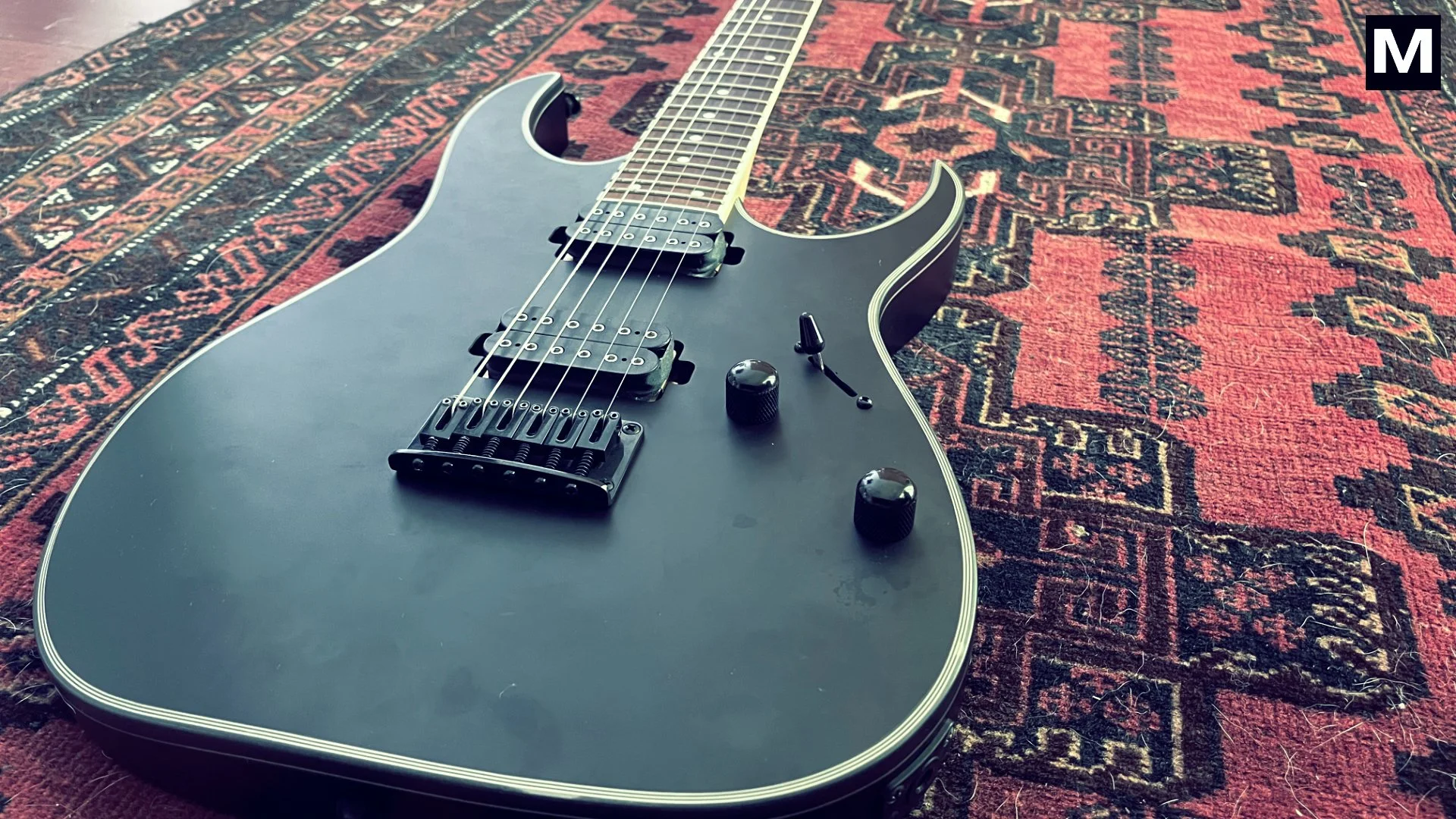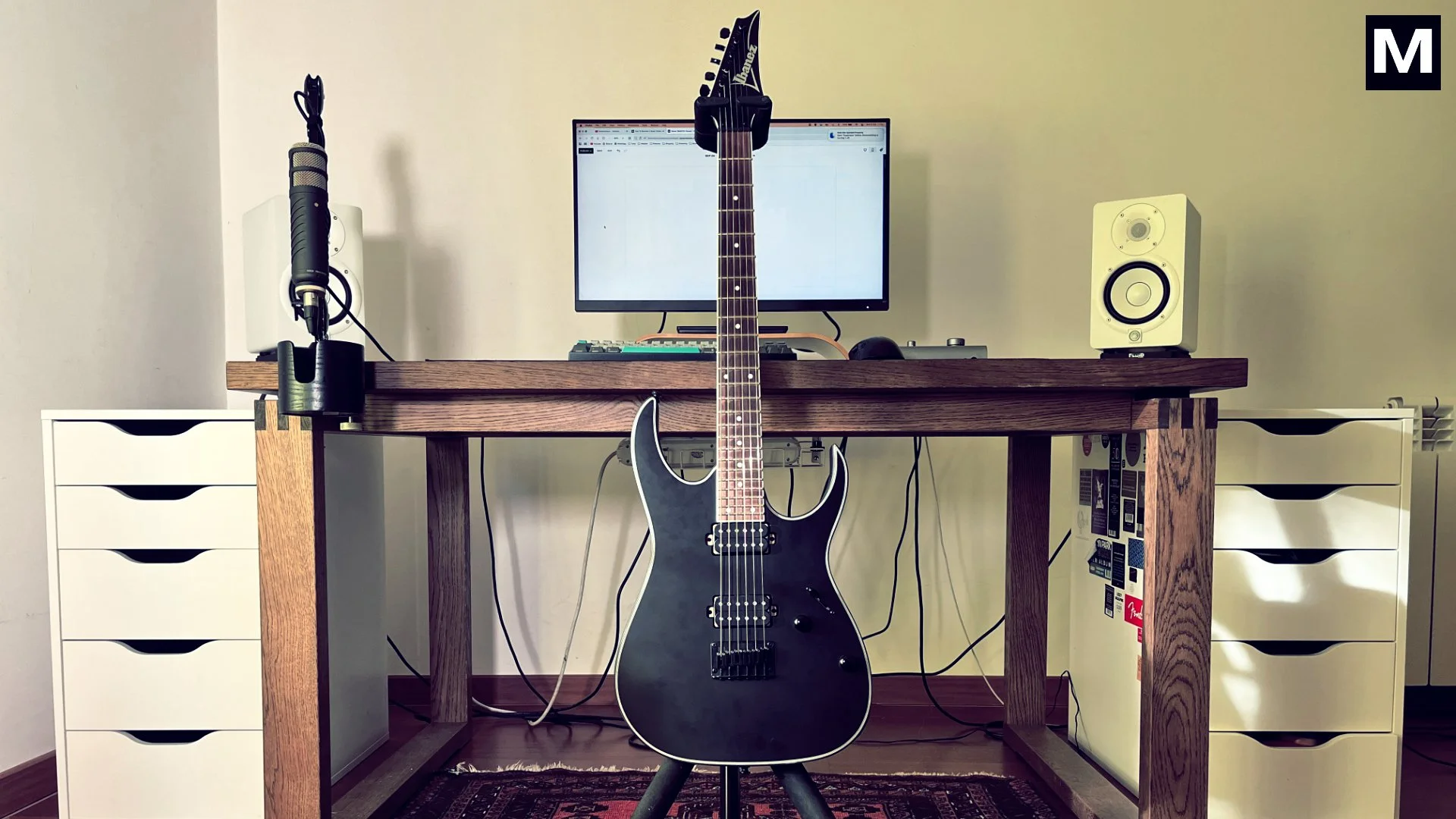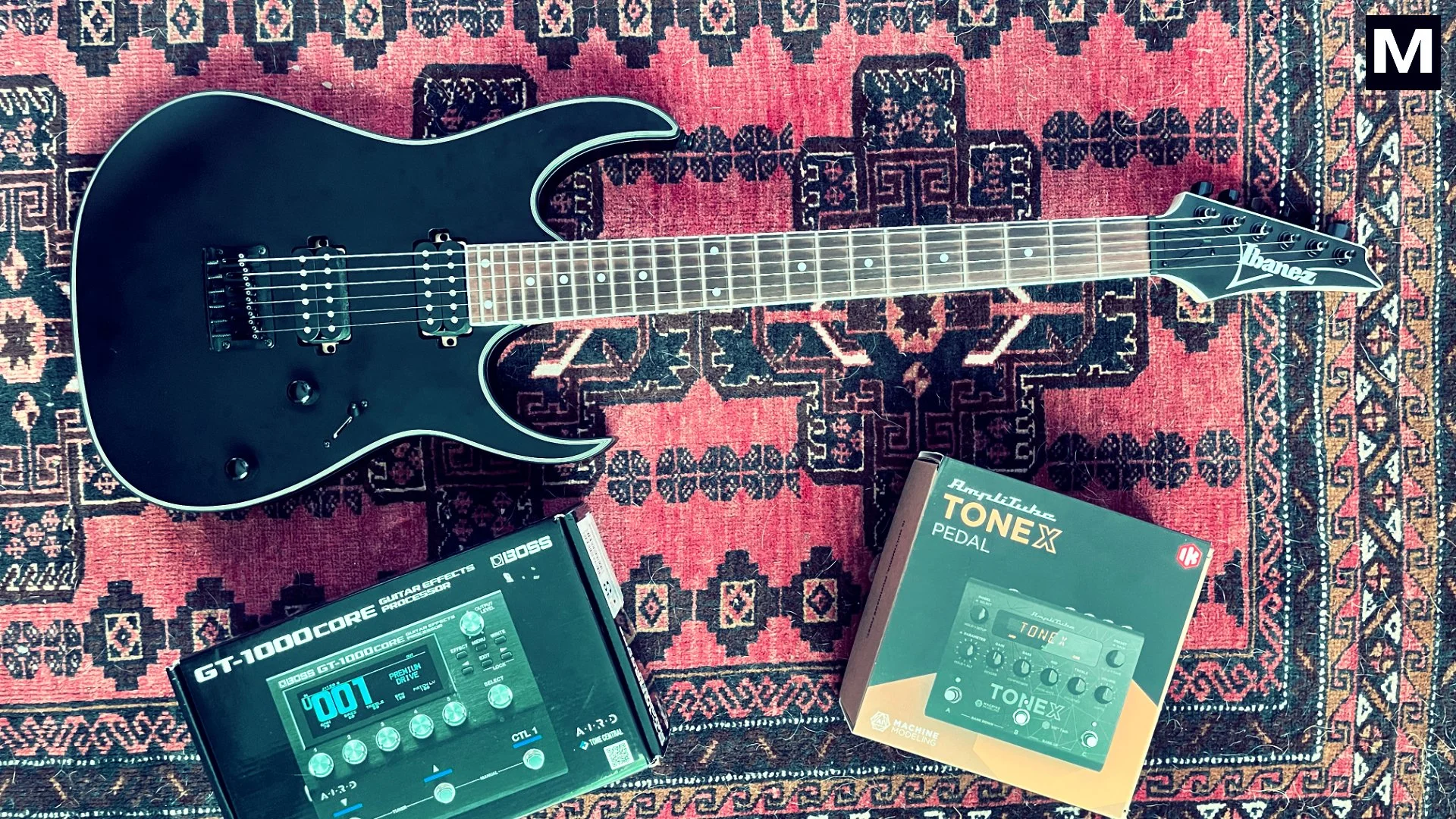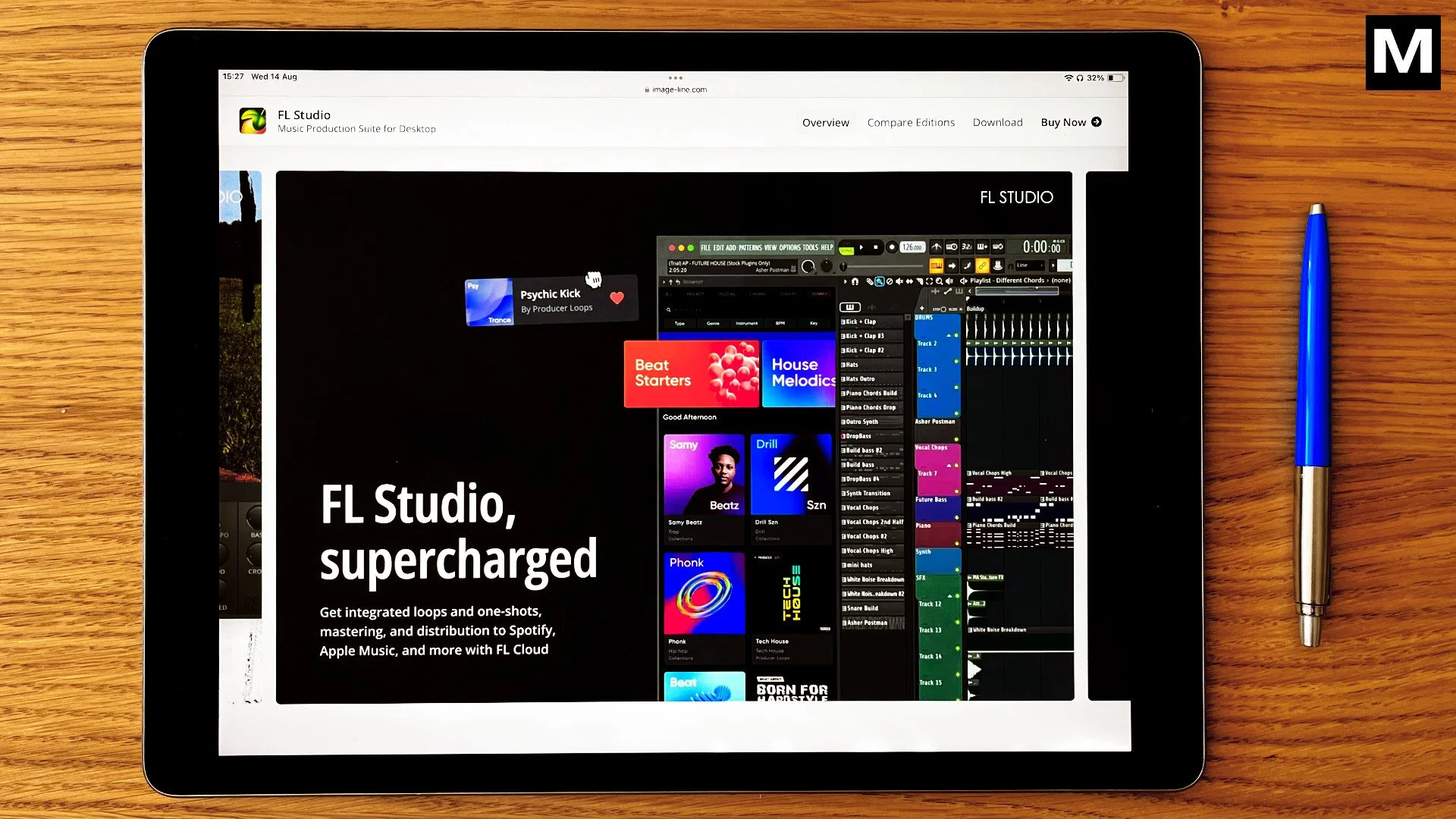Ibanez RG421EX Review: The best affordable metal/rock guitar?
Note: I bought this guitar with my own money to use it in real life situations. This review are my thoughts after owning it for about a year and playing it extensively. Ibanez has no affiliation with me or this review.
As far as affordable guitars go, Ibanez has a history of producing very well made instruments at fair prices. My first guitar, in 2007, was an Ibanez GiO GSA60 in sunburst that then cost about 300€/300$ at a local shop. The “same” guitar today costs about 200€/200$ at Thomann. What about inflation? Well, to be fair, it’s not really the same guitar. Looking at the current model, it looks like a serious downgrade from the one I owned almost 20 years ago. For starters, mine had a very nice glossy finish where the current one is satin. Mine also had a dark and beautiful rosewood fretboard, while the current one is made of jatoba, a cheaper alternative that doesn’t look or feel as good. And just by looking at the the guitar, many other appointments seem to be much more cheaply done than they were in 2007. But let’s not forget - this guitar model got cheaper, not more expensive - and that’s where I think Ibanez is such a consumer-first company.
300€/$ used to get you the GiO back in 2007. Nowadays it (almost) gets you the main character of this review: the RG421EX.
1. Overview
A great guitar with some glaring issues
The Ibanez RG421EX is an Indonesia-made instrument, I assume from the Cort factory. Keeping in mind that this is a very accessibly-priced instrument, I would generally say this instrument offers decent price-to-performance benefits to guitarists.
Firstly, this guitar offers what I consider to be the focal point of a buying an Ibanez: the amazing Wizard neck profile. If you’re unfamiliar, the Wizard neck profile is Ibanez’s classic neck carve, which consists of a very thin and semi-flat neck profile (think very thin D-shape). Personally, this is my favorite neck profile of all time, I’ve tried every other neck out there and nothing ever feels as “at home” for me as the Ibanez Wizard. What this carve allows is very fast and accurate playing with minimal effort, plus fretting notes on this thing is really easy. No pain anywhere on my left hand. If you would ask me if there’s any downsides to the Wizard neck profile, I would say no. I really believe it’s one of the best necks out there, but I guess that depends on your preferences.
The Wizard is not for everybody. It definitely depends on what sort of necks feel natural to your hands and your playing. If you haven’t tried one of these before, I would advise finding an Ibanez RG guitar at a store and trying it to at least see what these necks feel like.
Other than the amazing neck profile, this guitar offers pretty bad quality hardware (we’ll get into that) and a very nice aesthetic design that is somewhat let down by the poor quality of the hardware and the bad satin paint job, which make the guitar look rather cheap - unlike other models from manufacturers like Sire, which make guitars on the same price range that feel like they’re twice as expensive.
2. Build Quality and Playability
The Ibanez standard meets bad hardware
I’ve owned many guitars over the last 7 or 8 years, and it’s been many years since I bought something at this low of a price point. However, I find it astounding and borderline unacceptable how low quality the hardware on this instrument is. Let’s take it part by part so I can be fair to the brand and to what is actually good here.
The tuners are pretty bad. This guitar won’t stay in tune longer than 20 minutes, I have to retune every other take when recording with it.
The nut is acceptable. By looking at it closely, you can tell it was done in a rush and the fillings seem unfinished, but it hasn’t given me any trouble other than bad looks.
The neck, as said before, is the best part of the guitar and its big selling point. It’s great! However the finish on the back of it seems a bit “raw” or unfinished. My other cheap-ish instruments from Sire are definitely better finished. But it doesn’t affect playability at all.
The fretboard isn’t great. It’s made of Jatoba, a cheaper alternative to rosewood which both looks and feels worse than actual rosewood. I just don’t like this wood type for both aesthetic and “feel” reasons. But in the grand scheme of things, I would say the fretboard isn’t a problem here, I just don’t like the way it looks and feels.
The frets are acceptable too, but nothing to write home about. They’re medium sized and I prefer jumbos, they’re nickel (I think?) and I much prefer Stainless, so these are not my preferred frets, but at this price point that would be difficult.
The pickups came very dirty from the factory and to this day I was unable to clean them. There’s some sort of sawdust on the pickups that I can’t get rid of. I guess quality control isn’t Cort’s strong suit.
The bridge I have no problems with. It’s comfortable and does its job. It looks cheap though.
The pickup selector is the worst offender in this guitar - it’s the worst I’ve ever seen. It rattles from side to side and feels almost loose. It works though, there’s no intermittent sounds or noise, but the quality of the part is extremely low - like offensively low. I would expect this on a 50$ guitar, not 430$.
The knobs and potentiometers are very bad. The knobs don’t turn very well (they’re slow and uneven), the material of the knobs is poor quality and the potentiometers are either off or on full-tilt. There’s no “breakup sounds with the volume knob” on this guitar - forget it.
The body and the strap thingies are fine. But the paint job is pretty bad, seriously. It feels unbelievably cheap. As for the bindings on the body and the neck, they look good and I love them from afar, but if you look upclose, they’re poorly executed, as is everything else on this instrument.
As for playability, that’s what this guitar was built for. While almost every piece of hardware on this is trashy, they’re all replaceable, luckily. What isn’t replaceable is the playability that the neck and body shape offer. This guitar is a really playable instrument that, despite it’s poor construction and low quality control standards, has given me many hours of comfortable and satisfying guitar playing.
And yes - both things can coexist. You can have an instrument that’s built poorly and feels cheap but still provides a great playing experience. That’s exactly what this guitar does for me.
3. Sound
Is the sound worth the price tag?
This guitar is equipped with two passive Quantum humbuckers, made by Ibanez, or at least licensed to Ibanez - I suspect these are cheap no-name pickups that Ibanez licenses from someone else - I doubt it’s their original design.
These pickups do a good job with high-gain metal tones and they’re very mid forward, which helps a ton when mixing with bass and drums on a DAW. I quite like their tuning/EQ curve for high gain stuff, there’s some bottom end but not too much and the right amount of mid. The highs on this guitar are not as clear and defined as I would like and there is some harshness up top.
My big gripe with these pickups is the lack of clarity on the notes, especially when chords are played, be it through gain or not. The pickups are just not very clear and the notes are not very well defined. Also, there’s a big lack of depth and texture in the notes when compared to other instruments I have - it’s as if the notes are slightly “out of focus” or on a lower “quality setting”.
That being said, these pickups paired with the guitar offer a decent metal tone for beginners or for live use. I would advise against using this guitar in the studio though, the pickups just don’t offer enough clarity for me to record with them. A pickup upgrade would be advised for studio work, in my view.
For anything other than metal, especially clean stuff - I must say this is not a good instrument. Contrary to the Ibanez tradition of versatility, this is not a versatile guitar. These humbuckers don’t sound nice without huge amounts of gain. If you’re expecting Les Paul/335 tones, there’s nothing close to that here - I suggest looking into an Epiphone or Sire.
4. Who is it for?
Is this the affordable axe for you?
All things considered, what is the target audience for this guitar? There’s a few groups of players I think could benefit a lot from this instrument.
✅ Guitar beginners: Regardless of your age, if you’re starting out on the guitar, the RG421EX might be the perfect instrument for you. It makes guitar much easier when compared to more traditional guitars because of its thin neck and flat radius. While these features aren’t to every player’s preference, they’re useful for beginners because they’ll make fretting notes much easier, which is a pain before you develop adequate muscle strength and calluses on your fingers.
✅ Players looking for a second guitar for metal/alternate tunings: If you’ve been thinking about getting into metal or trying out some alternate tunings and you’re looking for an affordable instrument to dip your toes before committing, look no further! The 421EX will give you just the necessary features to have a super playable second guitar for heavier music/different tunings.
✅ Players looking for a backup guitar in live settings: While I think this guitar has many flaws in the sound and hardware department, if you’re looking for something to serve as a backup in live music situations, this is guitar fits the bill quite well. It’s very playable and reliable enough to get you through a gig with no problems in case your main axe breaks a string or you need something in a different tuning for a couple songs. Just know you’ll probably have to re-tune in-between songs if you keep the factory tuners.
Who/what is this guitar not for?
❌ Studio work: If you’re looking to do studio recordings, look elsewhere. This guitar doesn’t do high-quality studio work out of the gate. The sound isn’t defined enough through high-gain and the clean sounds are bad. The hardware is of such low quality that it’s unlikely you’ll have a good time recording with this one too.
❌ Seasoned players looking for a main guitar: If you’re been playing for a long time and are doing pro or semi-pro work in music, invest a bit more on a main guitar, if possible. This instrument doesn’t have the reliability needed for touring or heavy studio work.
5. Price 🤑
Accessible pricing done right.
The Ibanez RG421EX is available now at these vendors (no affiliate links below):
In conclusion…
This is a good metal guitar that will help you play better and faster. However, this isn’t one of those “punches above its weight class” cases - if anything I think what’s on offer here is actually not great for the price. I feel this guitar should be priced lower, maybe around 250$. The wizard neck’s great, and the guitar sounds good through high gain, but the finish, the build and the low-quality hardware are simply not enough to make this a great purchase. There’s also no included gig bag so you’ll have to buy one separately.
If you know what to expect from this, I think it’s worth buying. The neck is awesome and the guitar is super comfortable to play, but don’t expect a well put together instrument or a great value for money - this is, construction wise, an entry level instrument for beginners which is not fit for purpose in highly demanding professional environments, unlike what other brands offer for the same price. However, other brands cannot compete with the playability and comfort this one offers at this price point, so if you’re a beginner, this may very well be the best option for a first instrument.
All in all, I’m a big fan of Ibanez guitars and this one does, in some sense, carry the Ibanez name well. But the money being asked simply doesn’t match the low quality manufacturing used to produce this instrument.
Frequently Asked Questions (FAQ)
1 - What are the key features of the Ibanez RG421EX?
Great neck which allows very good playability, ease of fretting notes, ease of shredding. Overall good metal attributes such as high output pickups and subdued pleasant aesthetics.
2 - How does the RG421EX perform in terms of playability and neck profile?
Insanely well! I would say this is one of the most playable guitars I’ve ever owned, even compared to guitars 10x more expensive. The neck is an Ibanez Wizard profile, and for me it doesn’t get any better. Note: I’m not saying this is a better instrument than ones 10x more expensive, not even close. I’m just saying it’s much easier to play because of the neck profile.
3 - What pickup configuration does the RG421EX have, and what tonal styles does it best suit?
It has two “Quantum” humbuckers made by Ibanez. Generally, I’m not a big fan of the pickups. They suit metal well but are a bit noisy and the clean sounds are not adequate at all. The in-between positions are there but pretty unusable IMO.
4 - Is the RG421EX suitable for beginners, intermediate players, or seasoned professionals?
It’s a perfect guitar for beginners. For intermediates and professionals, I’d say it depends on what you want. If you’re looking for a second instrument for live use, it’s awesome. For studio work, I would advise caution. The electronics are not high quality.
5 - How does the build quality and hardware (bridge, tuners, fretboard) hold up over time?
This is the worst aspect of this instrument. The hardware is of very low quality and has deteriorated rather harshly over 1 year of medium use. If you plan on keeping this one long-term, you will need to replace most of the hardware eventually.
6 - Which aftermarket pickups would be a good upgrade choice for the RG421EX?
Since this is a passive guitar meant for monstrous metal tones, I would personally go for Seymour Duncan Nazgul/Sentient or Bareknuckle Brute Force. But obviously this depends on what you’re looking for.







